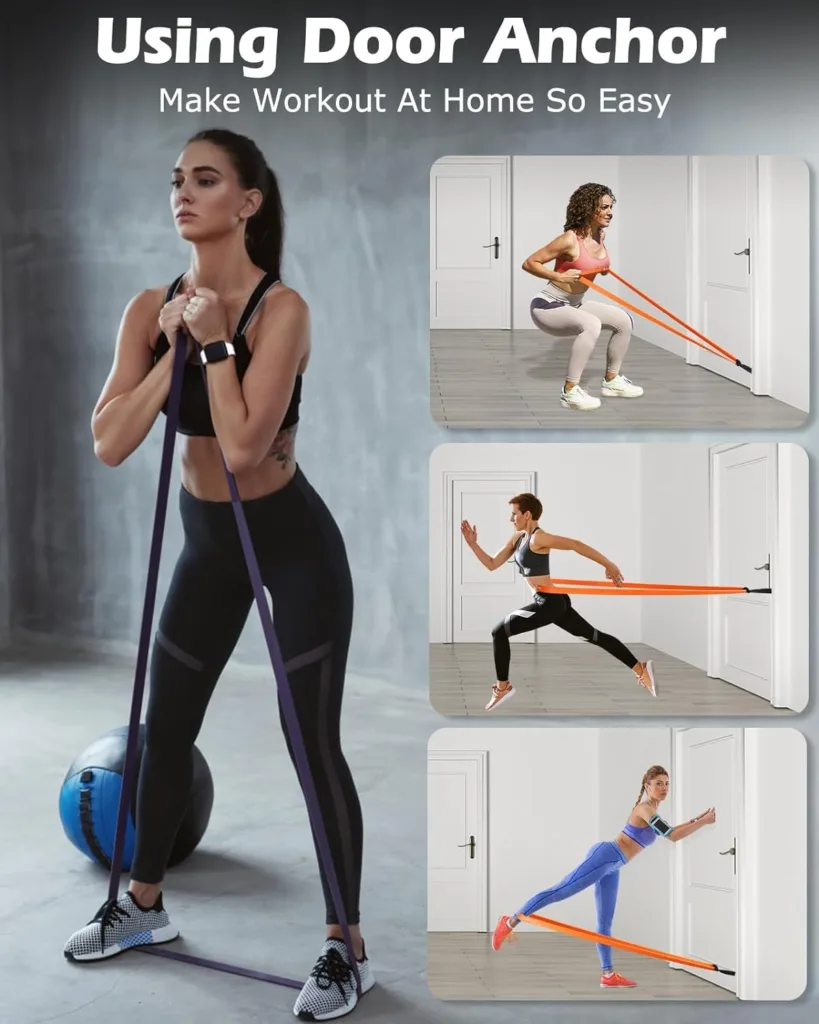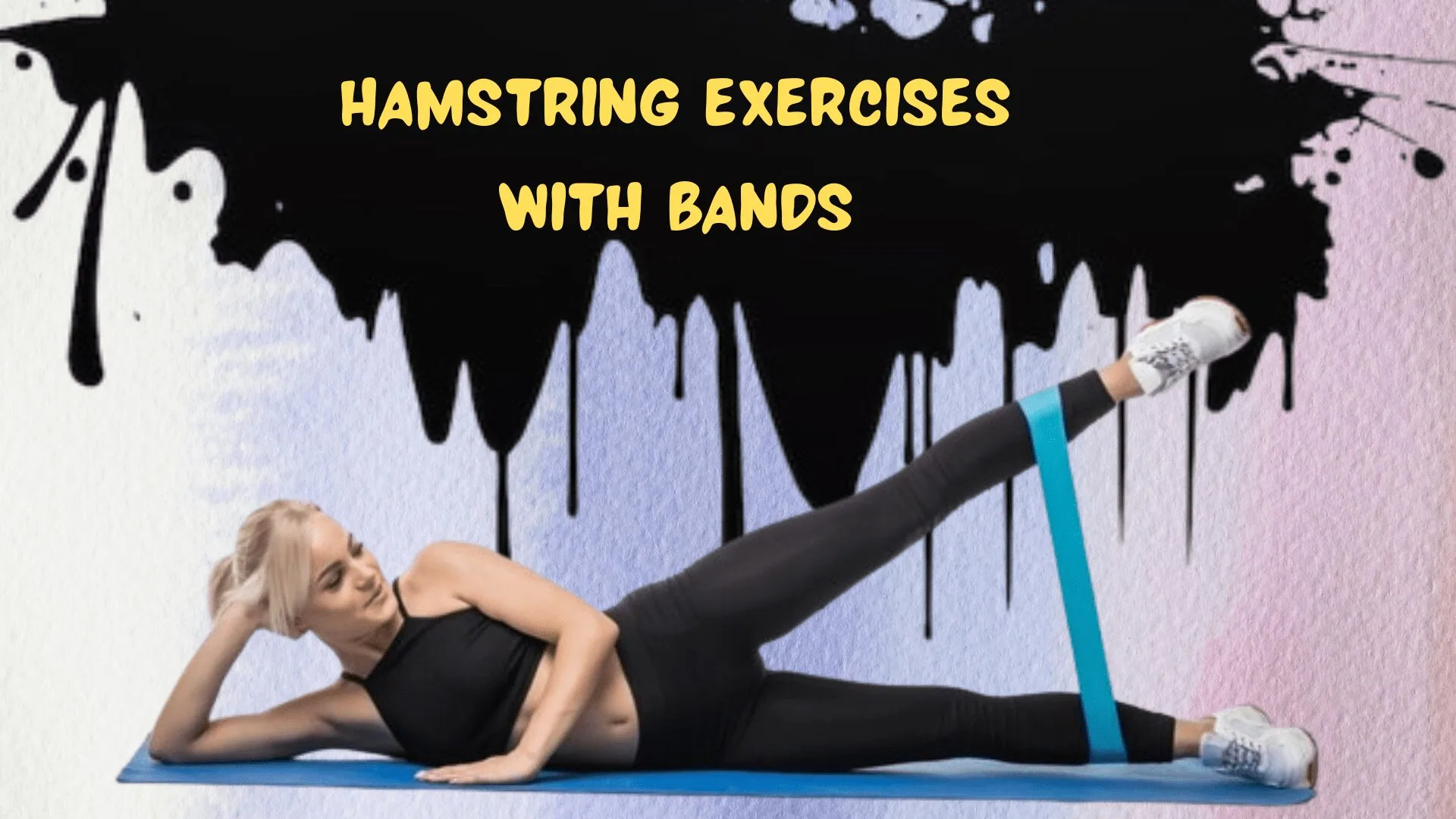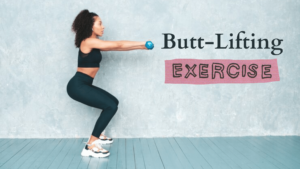Learn the leading guide to effective best hamstring exercises with bands! Release the power of resistance training with our curated list of the best hamstring exercises, designed to sculpt and strengthen. Boost your fitness journey with these dynamic band exercises for toned and resilient hamstrings. Your path to stronger, more flexible legs starts here explore the best hamstring exercises with bands now!”
Here Are 8 Best Hamstring Exercises With Bands:
1. Banded Hamstring Curl
Open your hamstring’s potential with the Banded Hamstring Curl. Secure a resistance band, find a comfortable space, and feel the burn as you curl your way to stronger, more defined muscles.
How To:
- Anchor a resistance band to a sturdy point near the ground.
- Cover your ankles with the band’s other end.
- Face the anchor point with your feet hip-width apart.
- Stand up straight, shoulders relaxed, and engage your core.
- Raise one foot off the floor, bending the knee so that your heel is in line with your glutes.
- Aim for a full range of motion, bringing your heel as close to your glutes as comfortable.
- Keep it controlled, no need for quick movements.
- Slowly lower your foot back down to the starting position.
- Keep tension on the band throughout for continuous engagement.
- Repeat the process on the other leg.
- Go for 10-15 reps on each leg, adjusting based on your fitness level.

6 Resistance Levels Pull-Up Assistance Bands
Pro Tip:
To achieve a full range of motion and more fully engage your hamstring muscles, pull the band back as far as possible, preferably past the 90-degree angle at your knees.
Want To Buy: 6 Resistance Levels Pull-Up Exercise Bands for Men Women
2. Lateral Band Walks
For a workout that targets not only your hamstrings but also enhances stability, Lateral Band Walks are your go-to move. Get ready to step up your game with this dynamic exercise.
How To:
- Place a resistance band around both of your legs, just above the knees.
- Stand with your feet hip-width apart and maintain a slight bend in your knees.
- Engage your core muscles to stabilize your body throughout the exercise.
- Take a step to the side with your right foot, maintaining pressure on the band.
- Follow by bringing your left foot towards your right, keeping the band stretched.
- Feel the engagement in your outer thighs and hip muscles as you move.
- Maintain a slightly bent knee position throughout the side steps.
- After completing several steps to one side, reverse the movement.
- Take steps to the left, ensuring the band remains stretched.
- Avoid rushing; focus on the quality of the movement.
Pro Tip:
Rather than jerking your legs to attain knee flexion, use a lighter resistance band that enables you to perform smooth repetitions with a full range of motion.
3. Standing Leg Curl
Take your leg day to new heights using a resistance band with the Standing Leg Curl. This standing variation not only challenges your hamstrings but also engages your core for a complete lower-body workout.
How To:
- Attach a resistance band to a fixed point at ankle height.
- Stand facing the anchor point and secure the band around one ankle.
- Balance on one leg with a slight bend in the knee.
- Engage your core for stability and maintain an upright posture.
- Begin by flexing your knee, bringing your foot towards your glutes.
- Feel the contraction in your hamstring as you curl your leg.
- Avoid swinging or jerking your leg to ensure you target the hamstring effectively.
- Aim to bring your heel as close to your glutes as comfortably as possible.
- Slowly straighten your leg, returning it to the starting position.
- Maintain pressure on the band even at the bottom of the movement.
- Repeat the exercise on the other leg to work both hamstrings evenly.
- Perform the desired number of repetitions on each leg.
Pro Tip:
Maintain neutral spinal alignment throughout the exercise by not overarching your lower back at the top of the rep. You are welcome to place your hands on the band to hold it in place if you are concerned that it may slide off your hips.
Learn More: Are Squats Enough for Leg Day? Learn the Power Moves for Ultimate Lower Body Transformation
4. Seated Band Hamstring Stretch
Flexibility meets resistance in the Seated Band Hamstring Stretch. This is an essential exercise for anyone who lifts weights or practices yoga since it improves flexibility and helps avoid hamstring strains.
How To:
- Find a clear, comfortable space to sit on the floor.
- Place a resistance band around the soles of your feet.
- Sit with your legs extended straight in front of you.
- Loop the resistance band around the soles of your feet and hold the ends in each hand.
- Hinge at your hips and lean forward from your waist.
- Keep your back straight as you fold forward, leading with your chest.
- As you lean forward, feel the gentle pull of the band stretching your hamstrings.
- Relax into the stretch and go only as far as your flexibility allows.
- Hold the stretch for at least 15-30 seconds, allowing your muscles to release tension.
- Slowly release the stretch, coming back to an upright seated position.
- Repeat the stretch if desired, gradually aiming to deepen the stretch over time.
- Listen to your body and adjust the intensity of the stretch accordingly.
Pro Tip:
To raise your hips off the ground, concentrate on pressing through the heel of your grounded foot. Consider placing the foot that is anchoring the band a little bit farther away from your torso if you’re having trouble feeling this in your hamstrings.
5. Deadlifts with Bands
Revolutionize your deadlift routine by adding bands to the mix. In addition to working your hamstrings, deadlifts with bands provide you with an additional layer of resistance for a challenging, full-body workout.
How To:
- Securely anchor a resistance band to the ground or a fixed point.
- Step on the center of the band with both feet, ensuring it’s centered under the arches.
- Place your feet hip-width apart as you stand above the barbell.
- Grip the barbell with both hands, keeping your hands slightly wider than shoulder-width.
- Keep the barbell close to your shins and maintain a straight back.
- Brace your core and slightly bend your knees, preparing for the lift.
- As you lift the barbell, the resistance band will add pressure, intensifying the lift.
- Stand up tall, extending your hips and knees fully.
- Hinge at the hips and return the barbell to the floor gradually.
- Maintain control, feeling the resistance from the band as you lower the bar.
- Complete the desired number of repetitions in the deadlift.
- Focus on the quality of each lift, emphasizing the engagement of your hamstrings, glutes, and lower back.
Pro Tip:
To keep your spine neutral while your torso moves forward, concentrate on pushing your hips behind you. If you’ve never done this before, position yourself approximately a foot away from a wall and concentrate on pushing your butt back till it touches the wall while you do the exercise.
6. Bridge with Band
Achieve a perfect glute and hamstring engagement harmony with the Bridge with Band exercise. This move not only strengthens your hamstrings but also contributes to a sculpted posterior.
How To:
- While lying flat on your back, bend your knees and place your feet flat on the floor.
- Position a resistance band just above your knees.
- Make sure your feet are parallel to your glutes and spaced hip-width apart.
- To overcome the band’s resistance, push your knees outward.
- This engages your glutes and sets the stage for the exercise.
- Push through your heels and squeeze your glutes to lift your hips towards the ceiling.
- Focus on creating a straight line from your shoulders to your knees at the top.
- Keep the tension in the band throughout the movement.
- For a brief period, maintain the bridge position at the top, focusing on the contraction of your hamstrings and glutes.
- Slowly bring your hips back down to the beginning posture.
- Perform the bridge for the desired number of repetitions.
- Focus on the mind-muscle connection, feeling the activation in your glutes and hamstrings.
Pro Tip:
Even when your torso is parallel to the floor, there should still be some bend tension. Stretching the band further by putting your feet a little wider apart than hip-width apart will provide you extra resistance.
To make things more challenging, you might need to utilize two resistance bands if one doesn’t offer enough strain.
Learn More: Surprising Benefits of Ankle Weights That Will Revolutionize Your Workout Routine
7. Prone Hamstring Curl
Experience the core benefits of hamstring training with the Prone Hamstring Curl. Strengthen your backside while maintaining a stable core a winning combination.
How To:
- Begin by lying face down on a mat with your legs fully extended.
- Place your hands under your forehead for support, with your palms facing down.
- Pull your belly button in the direction of your spine to engage your core muscles.
- Loop a resistance band around the bottoms of your feet.
- Ensure the band is securely anchored to a fixed point behind you.
- Begin the movement by bending your knees and bringing your heels towards your glutes.
- At the top of the movement, squeeze your hamstrings and hold for a brief moment.
- Slowly straighten your legs and lower them back towards the ground.
- Keep the movement controlled to maintain tension in the hamstrings.
- Throughout the exercise, keep your core engaged to stabilize your lower back.
- Perform the prone hamstring curl for the desired number of repetitions.
Pro tip:
Although the tension may not be sufficient to deliver the required overload, you can begin with a single, looped resistance band. To raise the resistance, think about using two or even three bands at once.
8. Band Pull-Through
Wrap up your hamstring workout with the Band Pull-Through. This versatile exercise not only targets your hamstrings but also engages your entire posterior chain for a comprehensive finish.
How To:
- An anchor is a resistance band to a fixed point, such as a sturdy post or pole.
- Loop the band through itself to create a secure attachment.
- Face away from the anchor point and grab the band between your legs with both hands.
- Stand with your feet hip-width apart and a slight bend in your knees.
- Maintain an upright posture with your shoulders back.
- Hinge at your hips, pushing them back while keeping a straight back.
- Lower your torso towards the ground, allowing the band to pass between your legs.
- Drive your hips forward and stand back up, pulling the band through your legs.
- Focus on using your hips and glutes to power the movement.
- Perform the pull-through in a slow and controlled manner.
- Continue the Band Pull-Through for the desired number of repetitions.
- Typically, aim for 12-15 reps to finish off your workout with intensity.
Pro Tip:
To keep your spine in a secure and healthy neutral position, flex your abs at the beginning of the exercise and keep the tension there. You must fight the natural tendency of raising your buttocks off the floor to arch your lower back, as this can result in pain in that region.
In Conclusion, There you have it the 8 best hamstring exercises with bands that promise to take your leg day from ordinary to extraordinary. These dynamic workouts provide a blend of strength, flexibility, and stability for both beginner and experienced athletes. You may anticipate that your hamstrings will grow into powerful, strong muscles that will support you in achieving your fitness objectives at every level when you include them in your program.
FAQs:
Q1: What is the Banded Hamstring Curl and how can I perform it effectively?
A1: To perform the Banded Hamstring Curl, anchor a resistance band, secure it around your ankles, and face the anchor point with feet hip-width apart. Lift one foot toward your glutes in a controlled motion, ensuring a full range of motion. Lower it slowly and repeat for 10-15 reps on each leg. Pro tip: Pull the band back as far as possible for optimal engagement.
Q2: How do I execute Lateral Band Walks to target my hamstrings and enhance stability?
A2: For Lateral Band Walks, place a resistance band above your knees, maintain a slight knee bend, and step to the side. Bring the other foot toward it, keeping tension on the band. Reverse the movement after several steps. Use a lighter band for smooth, controlled repetitions, focusing on quality over quantity.
Q3: Can you guide me on performing the Standing Leg Curl with a resistance band?
A3: Execute the Standing Leg Curl by attaching a resistance band at ankle height, securing it around one ankle, and balancing on one leg. Flex your knee, bringing your foot toward your glutes, feeling the hamstring contraction. Avoid swinging and aim for a controlled movement. Repeat on both legs for desired reps.
Q4: How can I effectively perform the Seated Band Hamstring Stretch?
A4: Sit on the floor, loop a resistance band around your feet, and hinge at the hips, leaning forward. Hold the stretch for 15-30 seconds, feeling the gentle pull on your hamstrings. Gradually release and adjust the intensity based on your flexibility. Pro tip: Raise your hips by pressing through the grounded foot.
Q5: What is the proper technique for Deadlifts with Bands to engage hamstrings and achieve a full-body workout?
A5: Securely anchor a resistance band, step on it, and grip a barbell. Lift the bar, focusing on hip and knee extension. Hinge at the hips when lowering the bar, maintaining control. Emphasize engagement of hamstrings, glutes, and lower back. Pro tip: Concentrate on pushing hips behind to keep the spine neutral.




